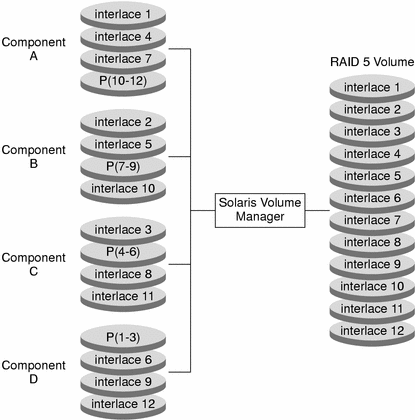Example—RAID 5 Volume
Figure 13–1 shows a RAID 5 volume, d40.
The first three data chunks are written to Disks A through C. The next chunk that is written is a parity chunk, written to Drive D, which consists of an exclusive OR of the first three chunks of data. This pattern of writing data and parity chunks results in both data and parity being spread across all disks in the RAID 5 volume. Each drive can be read independently. The parity protects against a single disk failure. If each disk in this example were 2 Gbytes, the total capacity of d40 would be 6 Gbytes. (One drive's worth of space is allocated to parity.)
Figure 13–1 RAID 5 Volume Example

- © 2010, Oracle Corporation and/or its affiliates
